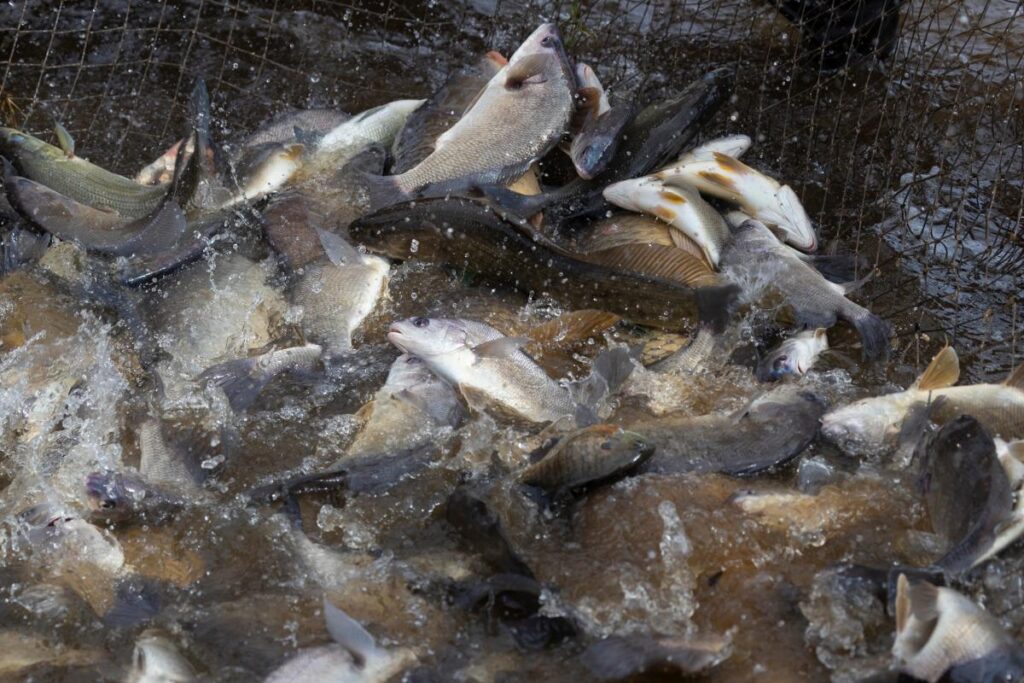In a concerning development, invasive silver carp have been spotted in the lower Chippewa and Black rivers in western Wisconsin. The state Department of Natural Resources (DNR) announced the findings, which stemmed from a July tip when anglers reported seeing jumping fish near the Dells Dam on the lower Chippewa River in Eau Claire. Silver carp are notorious for leaping from the water when disturbed by boat motors or other loud noises, making their presence known in the waterways. Following this tip, the DNR utilized data gathered from an acoustic receiver stationed near the dam, which is designed to detect transmitters embedded in previously tagged fish. This investigation revealed that at least one silver carp had traveled through the lower Chippewa River during July and August after being captured and tagged on the Mississippi River, demonstrating an invasive species’ movement within the wider watershed.
The findings were not isolated, as similar data from another acoustic receiver located on the lower Black River, near Melrose in Jackson County, indicated that a separate silver carp passed through in May. The Chippewa and Black rivers are both tributaries of the Mississippi River, which has become a conduit for invasive species such as silver carp since their introduction to the southeastern United States in the 1970s. Originally imported for weed control in aquaculture, these fish managed to escape into wild ecosystems, where they now pose serious ecological threats. According to Tyler Mesalk, the DNR’s aquatic invasive species coordinator, the high water levels on the Mississippi River during June and early July likely facilitated the carp’s upstream migration, allowing them to bypass open dams and enter tributaries.
Invasive carp, including silver carp, can grow to substantial sizes—up to 100 pounds—and reproduce prolifically, laying hundreds of thousands of eggs in a single spawning season. Their rapid population growth can outcompete native fish species for food and habitat, leading to a significant decline in indigenous fish populations. Additionally, the presence of these invasive species is feared to degrade water quality, impacting vital ecosystems such as freshwater mussels and other sensitive organisms. Furthermore, the jumping behavior of silver carp can create hazards for recreational boaters and water skiers, as individuals can be startled or even injured by these leaping fish.
Efforts to track and control invasive carp populations have been extensive, with state and federal agencies investing substantial resources to mitigate their spread, particularly in the Great Lakes region. The invasive carp have already reached areas as far upstream as the Twin Cities metro, and varieties including silver carp, grass carp, and bighead carp have been documented in the upper river system for years. A recent study by the U.S. Geological Survey has also indicated that black carp are reproducing in the river basin, which adds another dimension to the invasive species issue. The situation highlights the challenges posed by these invasive fish, and ongoing management strategies are critical as agencies aim to prevent their encroachment into sensitive ecosystems like the Great Lakes.
Preventative measures have included a significant upgrade to a lock and dam system located south of Chicago, specifically designed to block the invasive carp from reaching Lake Michigan. This infrastructure is part of a broader strategy that involves federal and state agencies spending hundreds of millions of dollars to protect aquatic habitats from these invaders. Public awareness is also a key component of the response efforts. The DNR encourages local residents and visitors to report any suspected invasive carp sightings and to act swiftly if they catch one by removing it from the water and contacting local authorities for guidance, thereby contributing to the collaborative efforts to manage this ecological threat.
Lastly, as the fight against invasive carp continues, the role of community involvement becomes increasingly vital. The DNR’s call to action stresses the importance of prompt reporting and responsible handling of invasive species by anglers and other river users. By staying informed and actively participating in conservation efforts, the public can play a crucial role in protecting Wisconsin’s waterways from the adverse effects of invasive species like silver carp. Authorities, including reporters like Madeline Heim, focus on raising awareness about environmental issues in the Mississippi River watershed and ensuring that communities are equipped with the knowledge necessary to address these ongoing challenges effectively.

